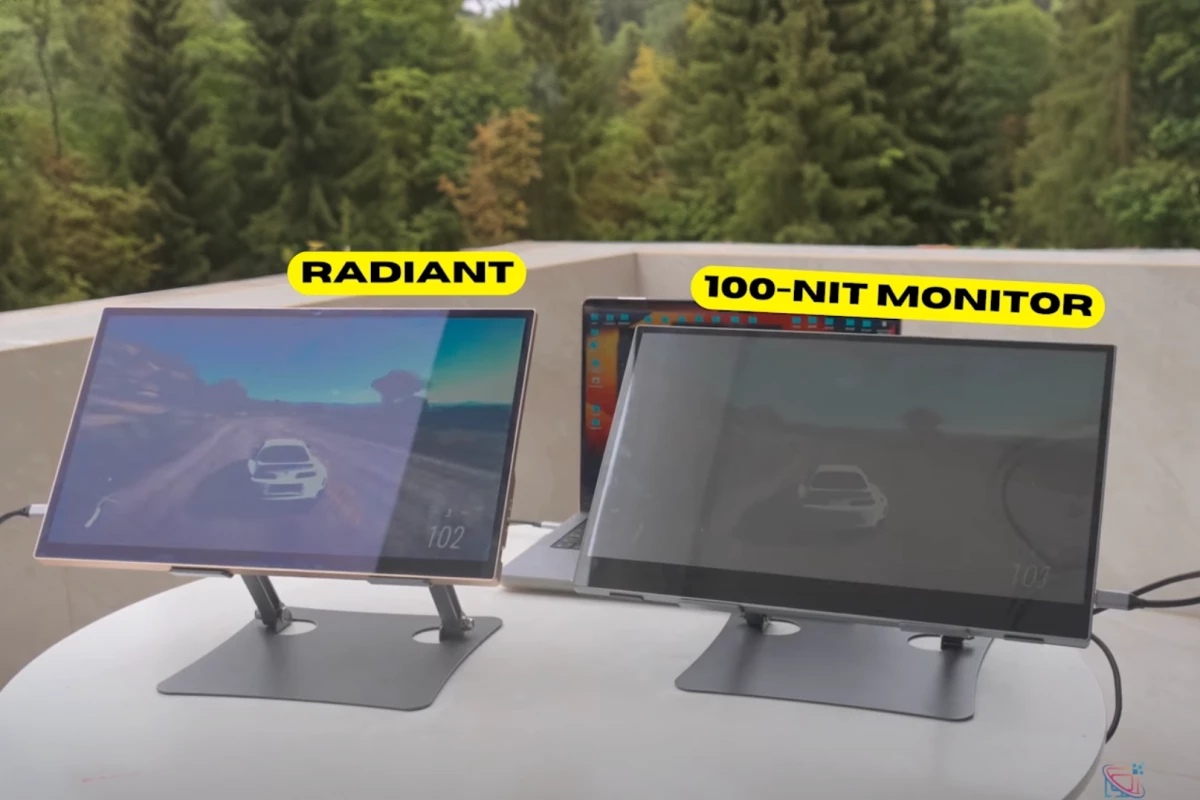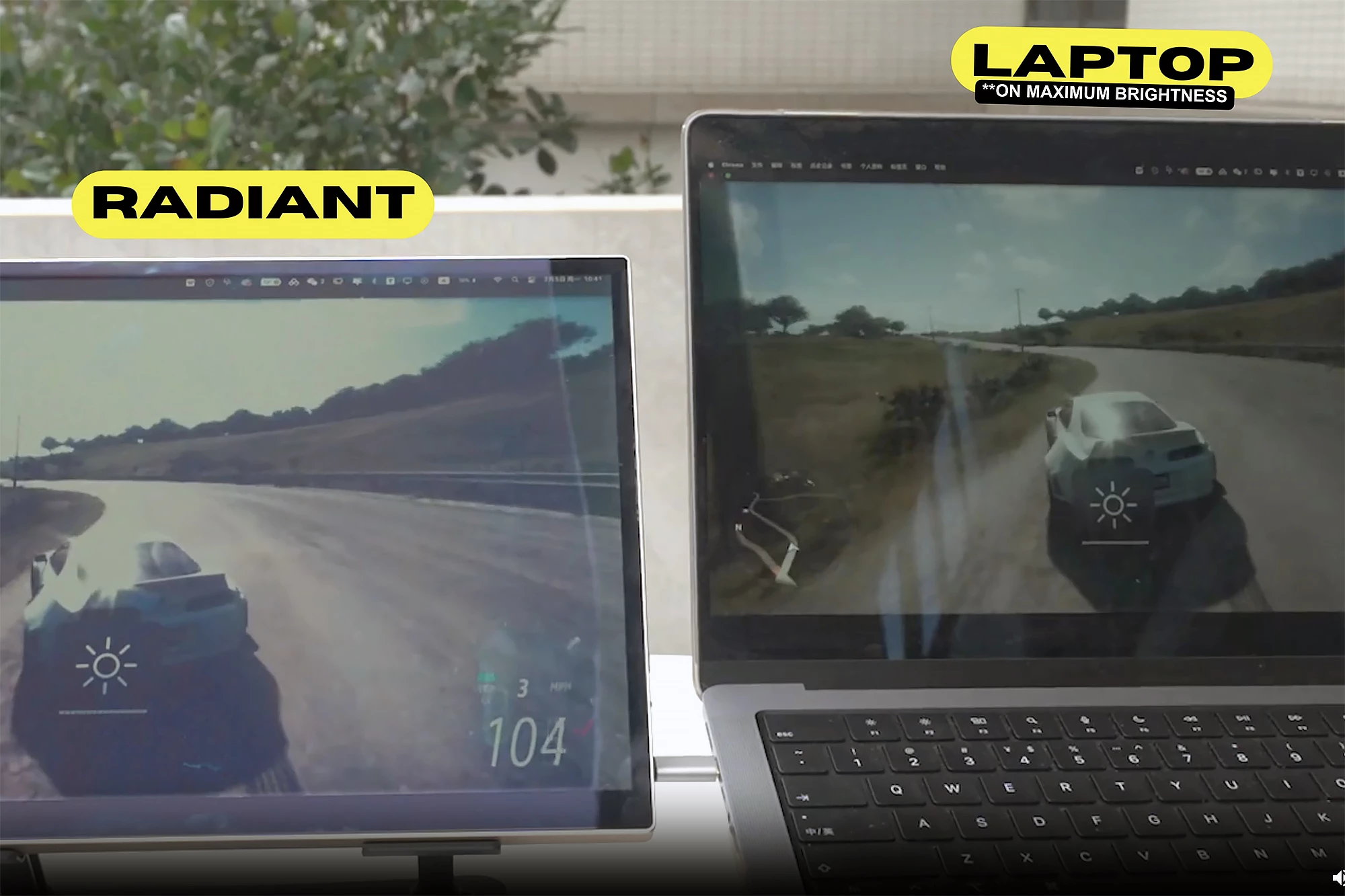Backlit monitors can be harsh on the eyes, causing eye strain. In October last year, New Atlas reviewed the Eazeye monitor, the world’s first naturally lit, anti-eye-strain monitor. At the time, its designer, high school student Louis Huang, was looking for backing on the crowdfunding website Indiegogo.
The upgraded Eazeye Radiant is about to hit the market, touted as the world’s first portable monitor to use ‘transflective’ LCD or TLCD, meaning the monitor can be front- or backlit to produce an image. In TLCD displays, natural light acts as a light source and in darker environments, a full-spectrum LED backlight illuminates it like a regular monitor.
When used outdoors, directly facing the sun, Radiant produces a brighter, more visible image than a standard 100-nit monitor. (A nit is how bright a screen appears to the human eye. Fun fact: It comes from the Latin word nitere, which means ‘to shine.') Eazeye says it uses 70% less electricity compared to similar-sized monitors that have their brightness maxed out to achieve a viewable screen image.
Similar to an e-ink display, Radiant’s 60 fps, 60 Hz refresh rate means it can be completely front-lit. Its decently sized 15.6-inch 1080-p touchscreen display means it can be used like a tablet. Built-in wireless screen mirroring is also an added feature.

The portable monitor’s all-aluminum body houses two USB-C ports and a mini-HDMI. VESA-compatible, Radiant can be attached to a desk or table using a VESA mounting system.
You can sign up via the Eazeye website for an early-bird deal on the Radiant TLCD monitor when it launches.
Source: Eazeye








